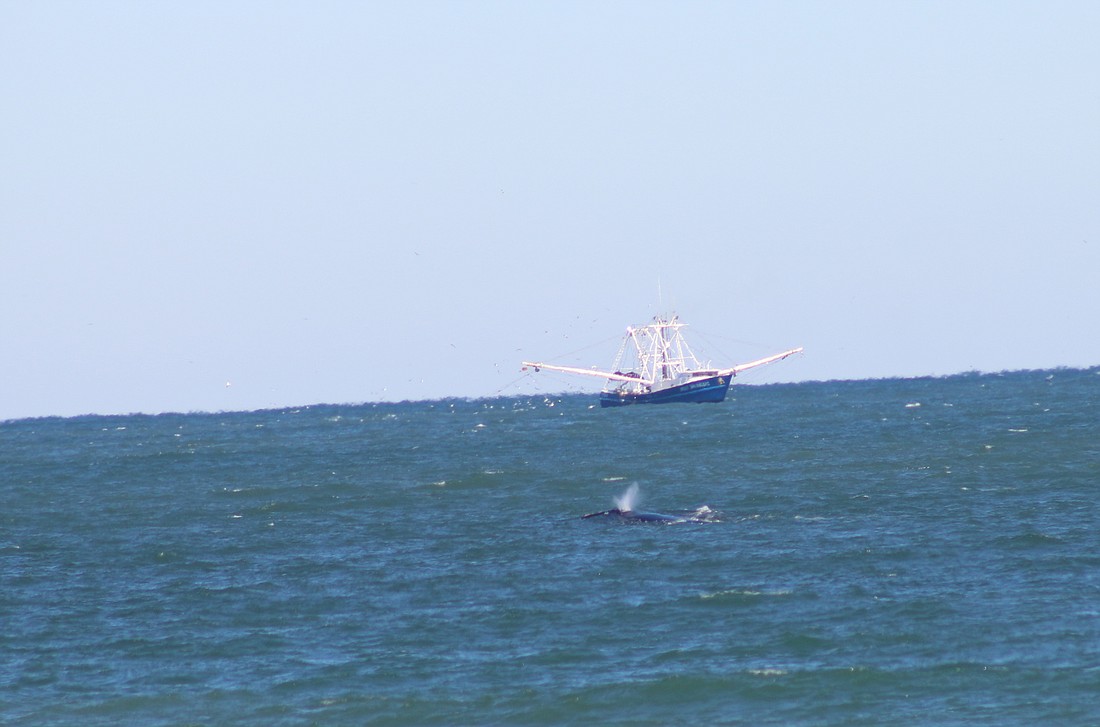- April 22, 2024
-
-
Loading

Loading

412.
That is how many North Atlantic right whales are left on Earth. In 1970, the species was listed as an endangered species under the Endangered Species Act, though its population has been at risk since the whaling days. By the early 1890s, the North Atlantic right whale was on the brink of extinction, according to the National Oceanic and Atmospheric Administration.
In the past week, one whale and her calf have been spotted three times near Flagler Beach and Ormond-by-the-Sea. She's known as whale number 3560, identified by the callosities on her head. She's a first-time mother at 15 years old.
The Marineland Right Whale Project scientists and 200 volunteers monitor the section of coastline between St. Augustine and New Smyrna Beach for sightings, as well as for documentation of new calves. They also look for human impacts on the whales, as collision with ships or entanglements with fishing gear are a significant danger to the mammals. While it's not very often, once in a while the project will spot an entangled whale or one with propeller scars, said Jim Hain, lead scientist and project founder of the Marineland Right Whale Project.
“We try to provide information of all kinds that will contribute to the conservation effort,” Hain said.
The whales' habitat spans from the Gulf of Saint Lawrence in Canada down to northeast Florida. Sometimes, whales can be spotted as far down as Cape Canaveral. Flagler and Volusia County are within the species' winter and calving habitat, which starts in Southeast Georgia.
The whales come down due to the warmer water temperatures, said Julie Albert, North Atlantic right whale conservation program coordinator with the Marine Resources Council. The calves don't have blubber yet to insulate their organs from the colder northern Atlantic waters.
“The Southeast U.S. is the only place we know of where they give birth," she said. "So if they’re coming here every year, it doesn’t necessarily make it a rare occurrence, but it represents only a very small portion of the population.”
Because this area is a calving habitat, it's important for people to learn to give these whales space, she said. Boaters, surfers and those on paddle boards are required to be 500 yards away from the whales. That's the length of five football playing fields.
“We want these mothers to be able to take care of their calves and rear them and make sure they’re healthy enough to migrate back to new England and Canada in the spring," Albert said.
Right whales begin migrating down to their calving habitats on Dec. 15, Hain said, and will linger until around mid-February.
In 2010, the Marineland Right Whale Project recorded 68 sightings. In 2017 and 2018, there were 0.
“It just goes to show you that the numbers are all over the place," Hain said.
Up until 2010, the population was increasing. Then, the trend reversed, a fact that is worrisome to scientists like Hain. Entanglements and ship collisions are believed to be part of the reason behind the decline, along with low calving rates.
For conservationists like Hain and Albert, understanding and documenting the species is part of their daily life. Understanding and awareness are the keys to ensure generations to come will be able to see right whales.
But unless you answer a hotline like Albert, or run to the shores to photograph them like Hain, it's about being at the right place at the right time.
“For the average citizen, if they get to see them once, that’s probably a very fortunate occurrence," Albert said. said.
Citizens can report whale sightings by calling 1-888-97-WHALE